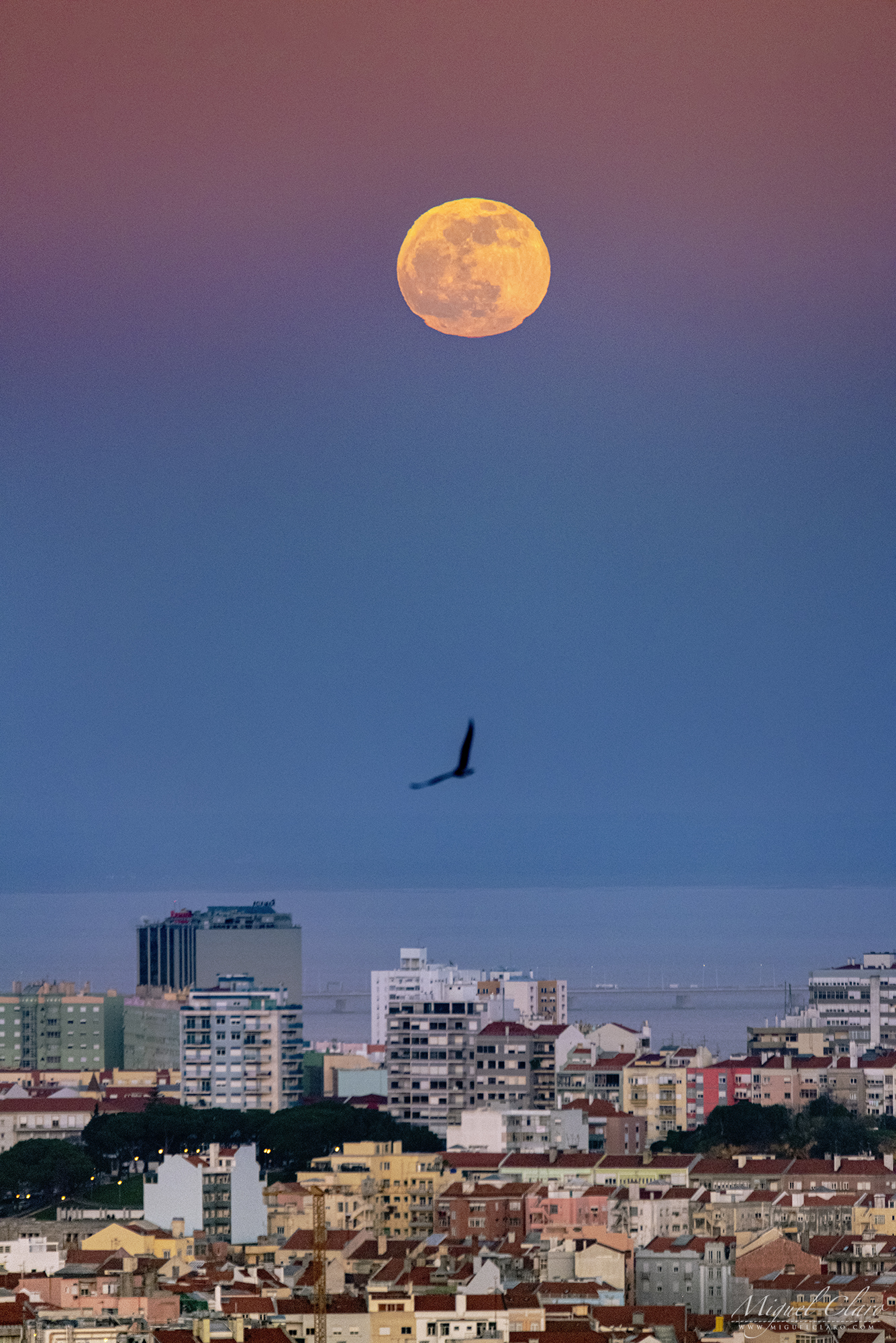Full moon and the 'Belt of Venus' glow over Lisbon during 1st eclipse of 2020 (photo)

Miguel Claro is a professional photographer, author and science communicator based in Lisbon, Portugal, who creates spectacular images of the night sky. As a European Southern Observatory photo ambassador, a member of The World At Night (TWAN) and the official astrophotographer of the Dark Sky Alqueva Reserve, he specializes in astronomical "skyscapes" that connect Earth and night sky. Join Claro here as he takes us through his photograph "Penumbral Lunar Eclipse and Anti-Twilight Arch as Seen From Lisbon City."
A cityscape view captured from the highest point of Lisbon shows the first full moon of the year, rising above the capital of Portugal on Jan. 10, with the Tagus River visible in the background.
This photo was taken during a penumbral lunar eclipse, which happens when the moon passes through Earth's faint outer shadow. During nautical twilight, it is difficult to notice this faint shadow on the moon's disk. However, a related phenomenon is visible almost every day, known as the Earth's shadow. According to Atmospheric Optics, a skywatching website run by physicist Les Cowley, this shadow is visible in the opposite half of the sky to the sunset or sunrise, and it appears right above the horizon as a dark blue band.
"Immediately above it, where the evening air is still lit, glows a pink band called the anti-twilight arch, or 'Belt of Venus,'" Cowley wrote. This phenomenon is caused by backscattering of refracted sunlight due to fine dust particles high in the atmosphere.
Related: The Wolf Moon lunar eclipse of January 2020 in pictures
After looking carefully at this image, my TWAN colleague David Malin, a photographic scientist and one of the most distinguished night-sky photographers in the world, noticed a phenomenon that is much more difficult to see. The blue-gray color below the reddish Belt of Venus is due to a phenomenon known as the Chappuis absorption effect, which happens when certain wavelengths of sunlight are absorbed by ozone in the atmosphere. Bob Fosbury, Malin's friend and a renowned astronomer, described the physics of this subtle coloration in an easy-to-read article published in the European Southern Observatory's astronomy magazine, The Messenger.
While the first lunar eclipse of the year was rising above Lisbon, by coincidence, a flying seagull was caught in the scene. The image also reveals a strong atmospheric turbulence, causing a clear distortion on the moon's round disk. Two small notches are visible in the lower half, as well as two more-subtle refraction notches at a similar distance from the upper limb.
Get the Space.com Newsletter
Breaking space news, the latest updates on rocket launches, skywatching events and more!
To capture this single shot, I used a Nikon D810A camera with the ISO set to 1250 and a 150-600mm Sigma Sport lens set to 440mm at f/6.3. The exposure time was 1/400 seconds.
- Wolf Moon lunar eclipse kicks off penumbral quartet for 2020 (photos)
- Earthshine's faint illumination of the moon captured in glorious eclipse photo
- The 'Super Blood Wolf Moon' ends with a lunar corona in gorgeous time-lapse photo
To get a print of Claro's amazing astrophotography, visit his fine-art prints store at www.miguelclaro.com/prints. Follow us on Twitter @Spacedotcom and on Facebook.
OFFER: Save at least 56% with our latest magazine deal!
All About Space magazine takes you on an awe-inspiring journey through our solar system and beyond, from the amazing technology and spacecraft that enables humanity to venture into orbit, to the complexities of space science.
Join our Space Forums to keep talking space on the latest missions, night sky and more! And if you have a news tip, correction or comment, let us know at: community@space.com.
Miguel Claro is a professional photographer, author and science communicator based in Lisbon, Portugal, who creates spectacular images of the night sky. As a European Southern Observatory photo ambassador, a member of The World At Night and the official astrophotographer of the Dark Sky Alqueva Reserve, he specializes in astronomical skyscapes that connect Earth and the night sky.











